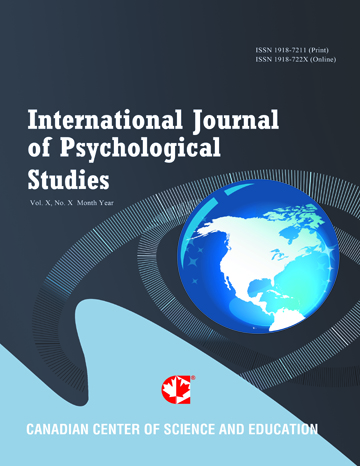Autism Spectrum Disorder: A Pakistani Teenager
- Khadeja Tahir
Abstract
The individual (K.N) seeking support was a 16-year-old female. She was referred due to concerns related to behaviors such as emitting loud noises, hitting and biting oneself, cranial self-impact, and limited social interaction. The assessment process involved conducting behavioral observations and compassionate clinical interviews with her parents, teacher, and a clinical psychologist. Additionally, the Childhood Autism Rating Scale (C.A.R.S) (Schopler, Reichier, & Renner, 1988) was employed to evaluate the extent of the challenges. This assessment was conducted through observations of K.N and in collaboration with their teacher to comprehensively assess her condition and rule out the presence of other potential disabilities. K.N's score on the C.A.R.S was 54, indicating placement within the severely autistic category. Based on behavioral observation and assessment it has been hypothesized that K.N exhibits characteristics consistent with autism spectrum disorder, indicating a need for comprehensive support. To address the K.N's challenges, we developed a tailored Individualized Intervention Program incorporating diverse behavior modification techniques. One of these approaches involved the implementation of Floortime (DIR) strategies to enrich the individual's social interactions and broaden her communication network. Pivotal Response Treatment (PRT) was used to reduce self-disruptive behaviors and encourage communication. By the end of therapeutic session eye-contact improved and she started maintaining eye contact for 4-5 seconds while before intervention plan, she had no eye-contact. she also displayed increased engagement in joint attention activities, allowing another person to interact with her 40% of the time. Furthermore, she demonstrated an 80% success rate in independently wearing her jacket or sweater when going outside. She started making requests when asked what she wants instead of indulging into self-injurious behavior 60% of the time. In the area of academic or cognitive skills K.N was able to identify opposites, differentiate between masculine and feminine forms, write five prepositions, compose three simple sentences about herself, type dictated words on an iPad, name the days of the week, perform basic addition on a calculator, and sequence numbers up to nine. In the area of motor skills, she was able to ride gym-bicycle for few minutes. K.N was also able to paint pots, stack matching boxes in a shelf. These remarkable advancements were achieved over the course of nineteen sessions.
- Full Text:
 PDF
PDF
- DOI:10.5539/ijps.v15n4p18
Journal Metrics
1. Citations (March 2025): 10975
3. i10-index (March 2025): 233
For details about the Journal Metrics, please visit the Google Scholar website.
Index
- AcademicKeys
- CNKI Scholar
- Elektronische Zeitschriftenbibliothek (EZB)
- Excellence in Research for Australia (ERA)
- GETIT@YALE (Yale University Library)
- Harvard Library E-Journals
- JournalSeek
- JournalTOCs
- LOCKSS
- MIAR
- Open Access Journals Search Engine(OAJSE)
- Open J-Gate
- PKP Open Archives Harvester
- SHERPA/RoMEO
- Standard Periodical Directory
- The Keepers Registry
- UCR Library
- Ulrich's
- Universe Digital Library
- WorldCat
Contact
- Barbara SunEditorial Assistant
- ijps@ccsenet.org
